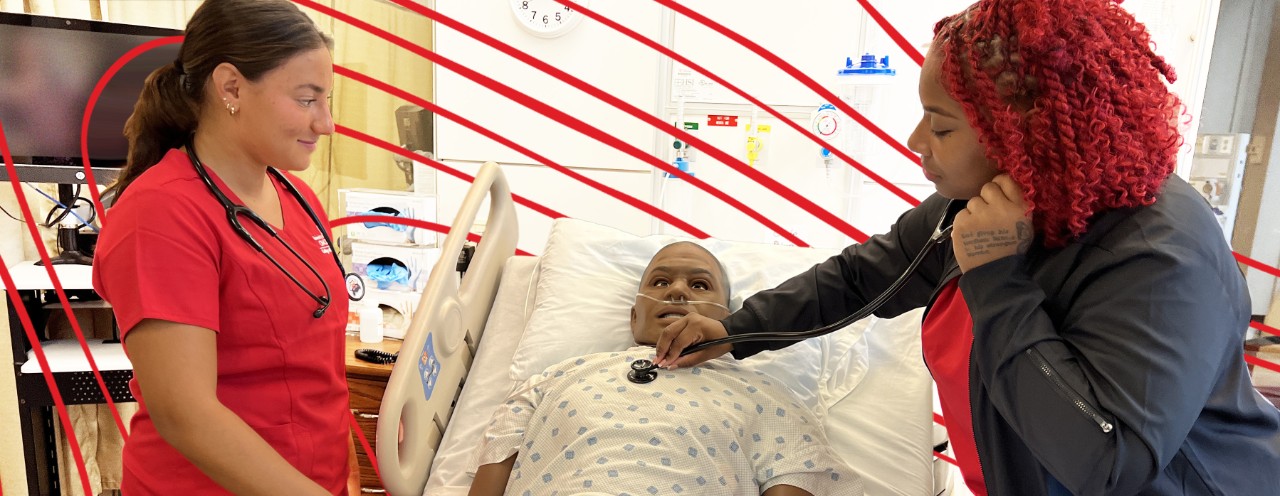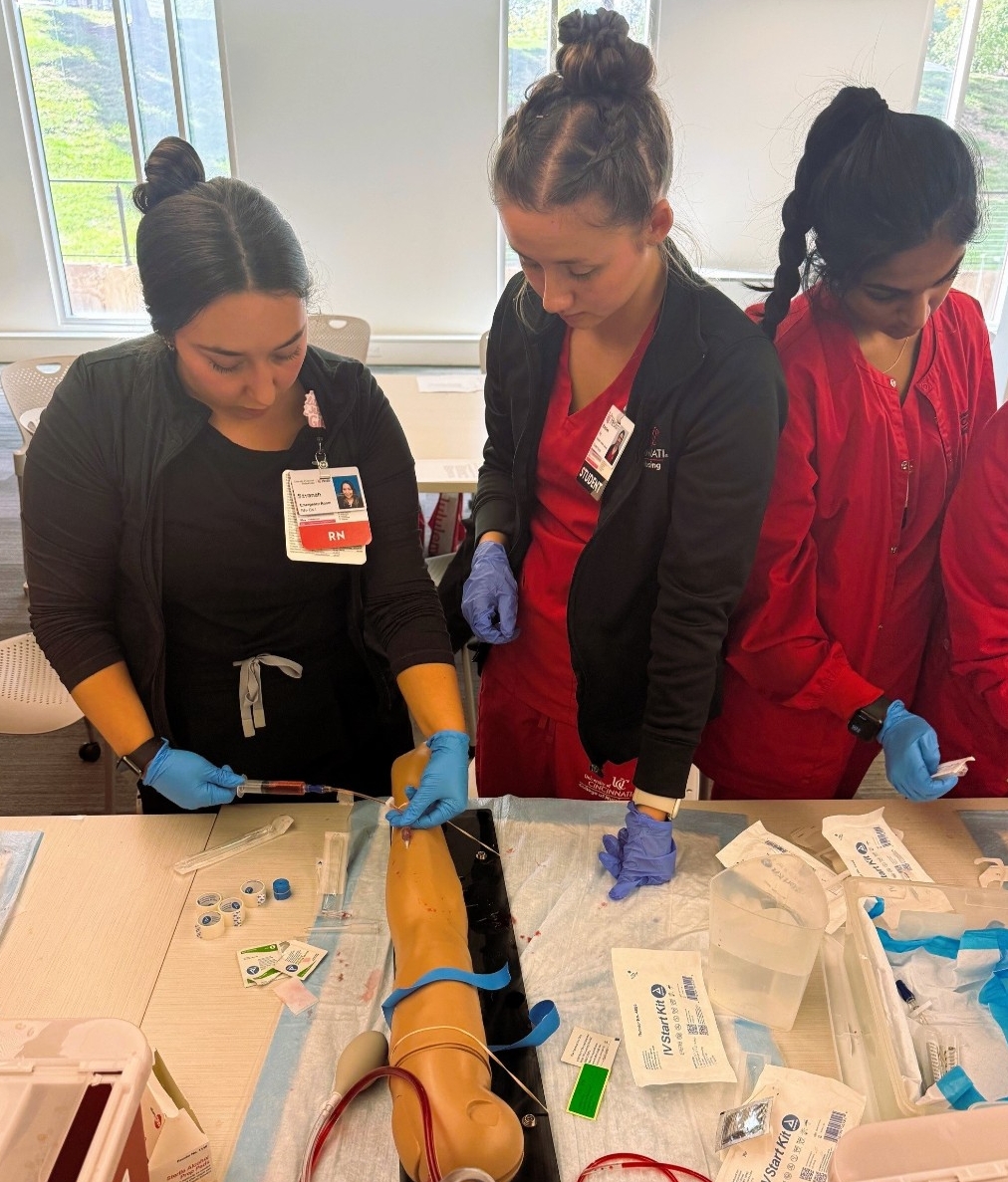
Simulation
At the University of Cincinnati College of Nursing, simulation serves as a vital bridge between classroom learning and clinical experience—allowing students to make real-time decisions, collaborate with peers and reflect on their actions without risk to patients.
The Science Behind Simulation
Simulation in healthcare education provides students with a safe, realistic environment to develop clinical judgment, critical thinking and teamwork skills.
Every simulation experience at UC is grounded in clinical expertise, educational theory and purposeful design. Each scenario is built with intent, aligned with national standards and tailored to the learner’s level of experience.
Early learners focus on foundational, skill-based exercises, while advanced students engage in complex clinical situations that require decision-making, prioritization and leadership. The goal is to strike a balance between challenge and clarity—helping students build confidence and competence step by step. Simulation strategies include the use of:

Task trainers for mastering technical and procedural skills
- Standardized patients for practicing communication and assessment
- Low- and high-fidelity manikins bridge the gap between theoretical knowledge and practical application
Virtual reality (VR) for immersive, high-stakes clinical experiences
These experiences encourage students to think critically, communicate effectively and make evidence-based decisions—all essential for success in modern healthcare.
